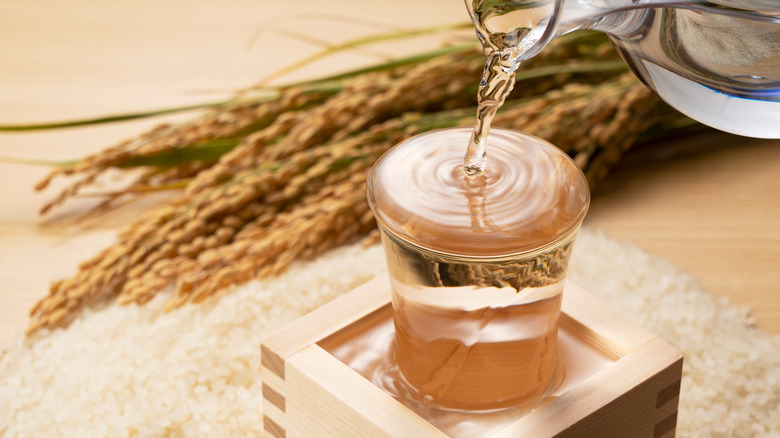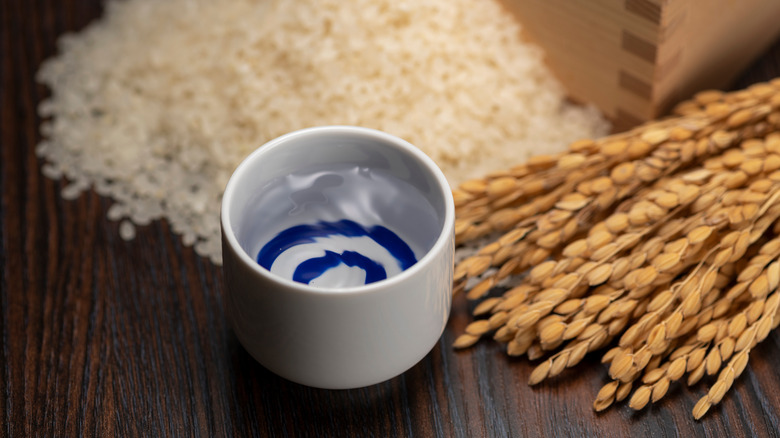Is There An Actual Difference Between Cold And Hot Sake?
With growing interest in niche cultural food and beverages worldwide, it should be no surprise that more people have been taking an interest in Japan's traditional beverages like amazake, shochu, and sake. Sake, in particular, has been seeing an increase in exportation, with demand in foreign countries continuing to rise (via Allied Market Research). The alcoholic beverage is traditionally made from fermented rice and is light in body and smooth in taste, making it the perfect drink to mix into cocktails, per MedMunch.
According to Britannica, sake typically contains 14% to 16% alcohol by volume — but make no mistake, this is no bold California red wine. Unlike winemaking, this grain-based drink experiences multiple parallel fermentation, after which more alcohol can be added to increase the ABV. Japan Sake shares that the method of making sake was first created in China and was brought to Japan, where the citizens of the country studiously brewed and perfected the art of sake-making.
And when it comes to the practice of drinking sake, there is typical etiquette to follow. Takara Sake explains this can range from how you hold the cup to allowing another guest to fill it instead of yourself. But there is another important aspect to consider — the temperature you drink your sake. Is there a difference between it being cold and hot?
Premium sake can be served cold while cheaper sake can be served hot
While there is no right or wrong temperature to drink sake, there are a few things to take into account. Rokaakor claims that lower-quality sake is typically served warm, whereas high-quality sake is served cold. This is so the cold temperature enhances an already premium beverage, while cheaper sake can disguise its faults by being consumed at a warmer temperature. According to Sake-World, this connects back to how sake was traditionally served warm up until the 20th century so that it could smooth out the aggressive woody flavor that it took on from being made and stored in wooden casks.
But once sake was made in stainless-steel or ceramic tanks, it became refined and much easier to imbibe without the help of it being warmed, leading it to be consumed colder if preferred. However, Eat Japan states that modern sake tends to be nuanced and has delicate flavors that could be washed out if served too cold — so slightly chilled (hiya) is what is most recommended by sake experts. Aside from being chilled or heated (o-kan), you can also drink premium sake like ginjoshu and daiginjoshu at room temperature, as this shouldn't dimish any aroma or flavor of your sake.
So what began as a determiner of quality — the temperature at which you drink your sake — is just based on your preference. Now the question stands: Which one will you choose?

